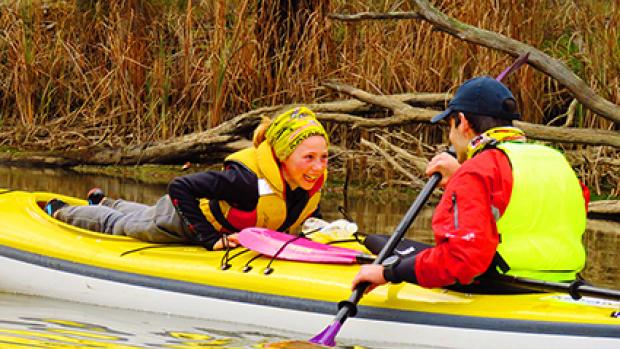Loading
Gunbower Forest a vital community asset

A healthy Gunbower Forest has big benefits for the local community and economy, but more than a century of river regulation has hit the much-loved forest hard.
Before regulation, Mother Nature flooded Gunbower Forest roughly seven out of every 10 years, with large widespread flooding lasting for up to six months in four of those seven years.
In the past 22 years, between Mother Nature and allocated water for the environment, key sections of the forest floodplain have been inundated only eight times – stretching the tolerances of wetland and floodplain plants to breaking point.
“The health of water-dependent native trees, plants, animals and fish that have evolved in these floodplain environments starts to decline when they receive half as much water as they require. That’s why Gunbower Forest needs a drink now,” North Central Catchment Management Authority (CMA) Project Delivery Executive Manager Tim Shanahan said.
“The current watering program is part of a long-term strategy to restore the health of the forest, within the restrictions of allocations and current infrastructure and capacity, and help build resilience for future dry years while water is still available.”
Mr Shanahan said regulation had altered the frequency of water going into the forest, particularly during dry years.
“Interestingly, if all the regulating structures were removed, Gunbower Forest would have received water in seven of the 10 years of the recent Millennium Drought, despite the dry,” he said.
“Instead, with river regulation, only a small amount of water entered the forest in three of those 10 years, reaching only some of the wetlands and none of the broader floodplain.
“Regulation and a changing climate have contributed to a significant loss of wetland and floodplain habitat across the landscape; a reduction in the frequency and size of breeding events of colonial nesting waterbirds; a decline in the number and diversity of associated water-dependent flora and fauna; and reduced connectivity between the river and floodplain forest limiting access to food and habitat for aquatic fauna.”
Despite this, Mr Shanahan said returning any waterway or wetland in any modified system back to ‘natural flows’ is impossible.
“The aim of water for the environment is to deliver water in a way that protects and repairs the remaining ecosystem, including plants and animals that are important to the community, and build resilience for future dry years,” he said.
“And at Gunbower, and across the northern part of the state, that is being done remarkably efficiently.
“A lot of people don’t realise that the water that is coming into Gunbower is actually water that has been used for healthy river flows down the Campaspe and Goulburn Rivers.
“From the rivers upstream the water then passes through Gunbower Forest filling up its wetlands, and some of the water continues on its journey, exiting the forest and ending up back in the Murray River. It may even be used again multiple times by the environment as it travels downstream, in the river channel itself and at other floodplain sites.
“That is an amazingly efficient use of water in anyone’s language. And it is also great for our native fish, who will thrive on the food that comes off the floodplain and back into the creeks and river.
“And it is water that is subject to the same allocations as irrigation water, but it is being reused.”
Mr Shanahan said Gunbower Forest is a tourist hotspot, providing economic benefits for the region’s towns and businesses.
“A healthy environment underpins healthy communities,” he said.
“More than 95 per cent of locals recently surveyed told us they value Gunbower Forest for its recreation and as an attractive place to visit.
“We are working hard to keep it that way and preserve it for the future economic benefit of our children and grandchildren.
“Tourism in the region is worth $503 million, up $100 million since the drought, and Gunbower Forest is a key part of that.”
Mr Shanahan said the Gunbower water for the environment program was about more than just watering the forest.
“The water that is going back into the Murray will provide an important boost to the food chain in the river for a long time to come, and will continue to keep these important tourism, environmental and community assets alive.
“I can’t wait to go fishing this spring, because I reckon the fish will be going off.
“The community has told us they don’t want the forest to deteriorate over the next decade, and more and more are telling us they believe without water for the environment it will. It is important to everybody.”
